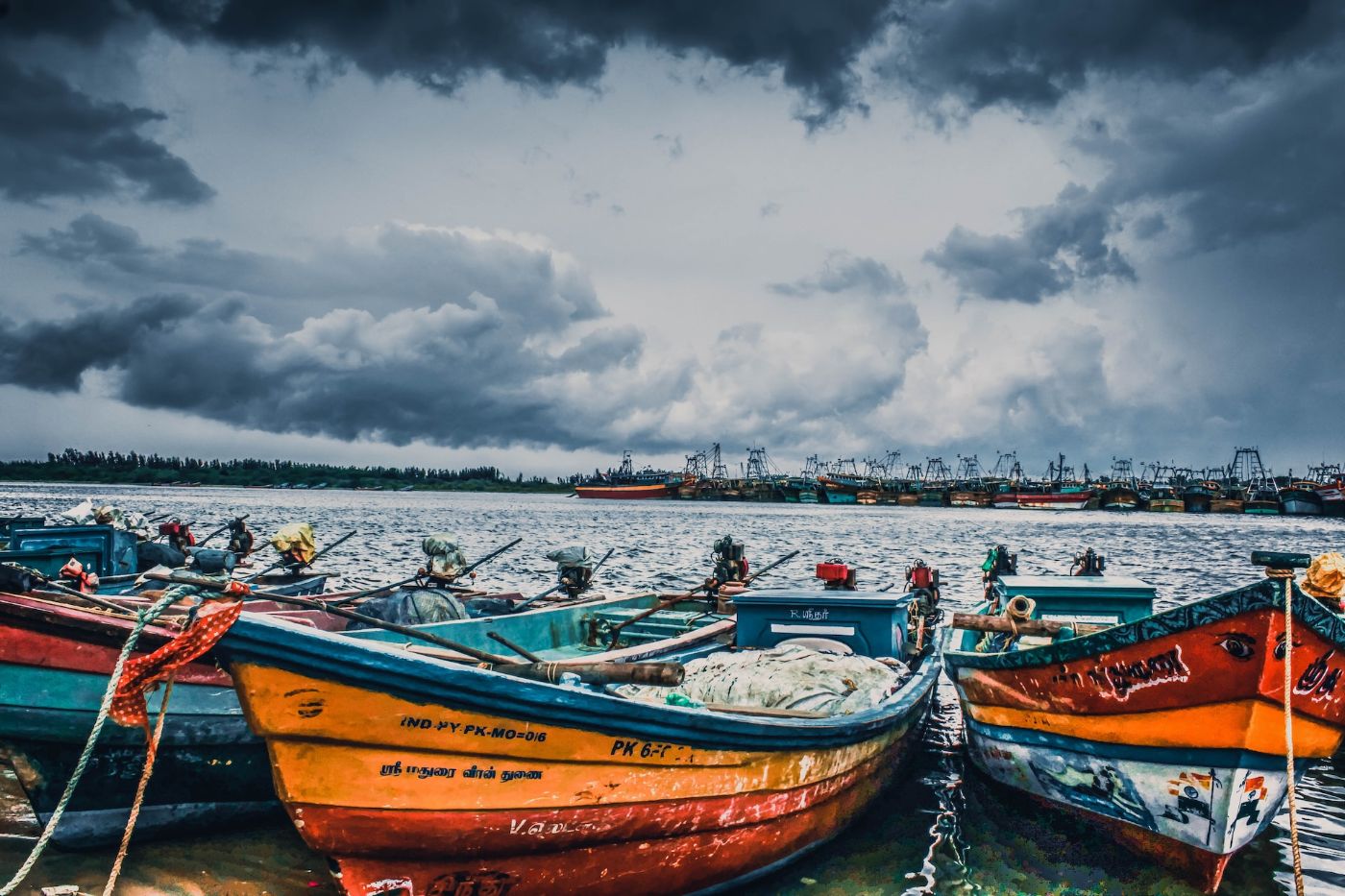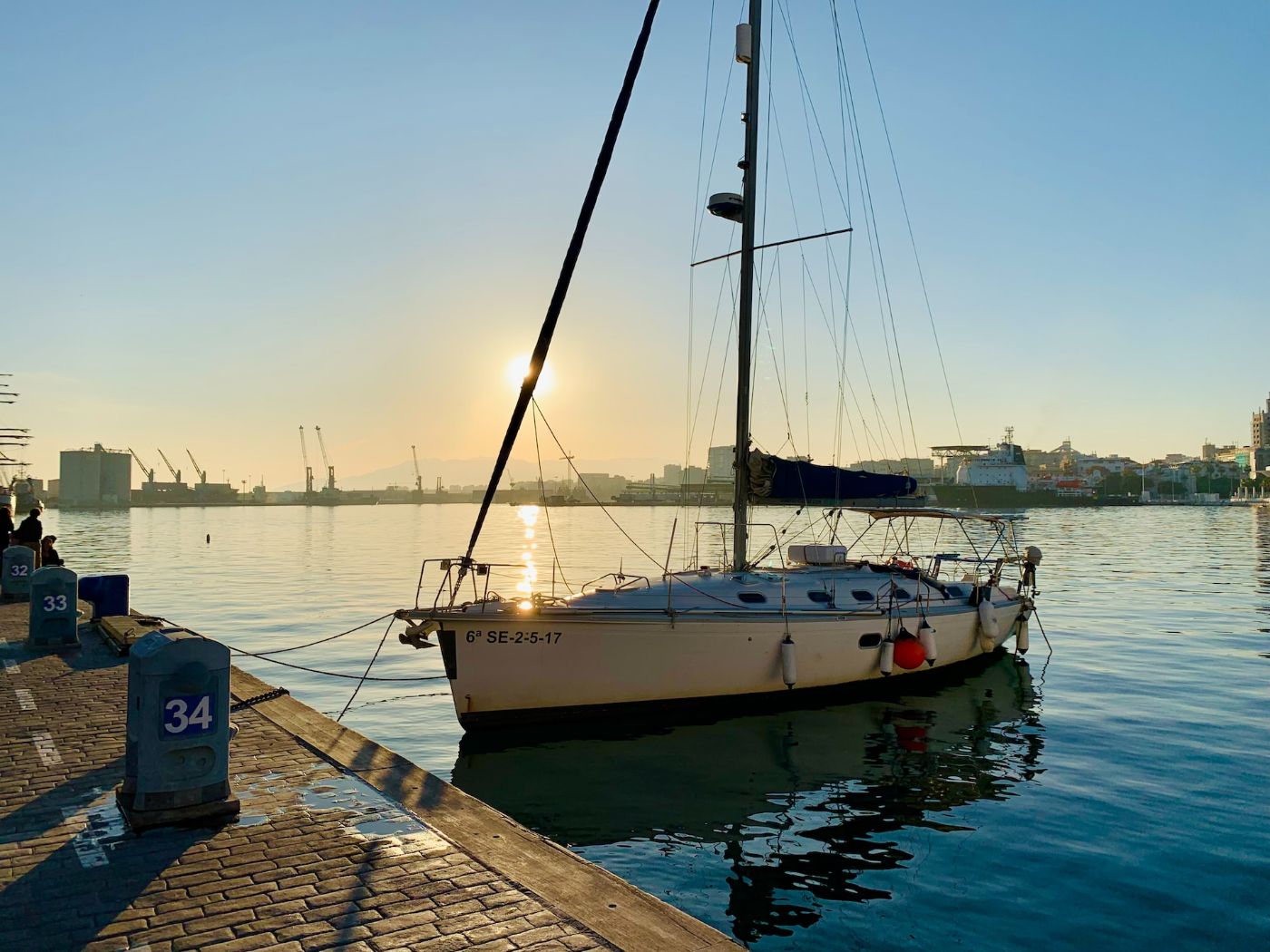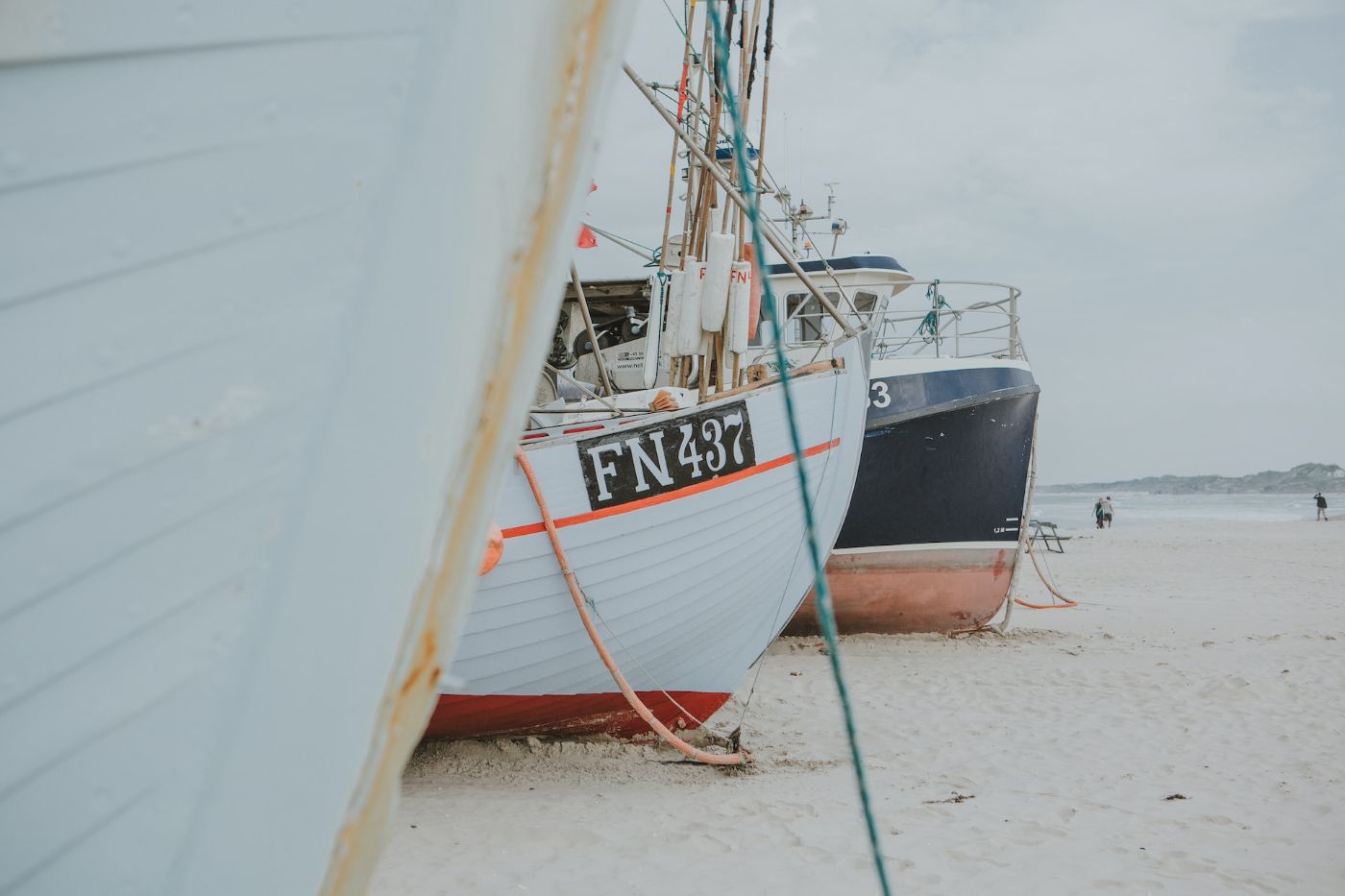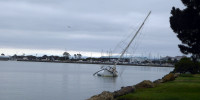How To Read a HIN Number: Boat HIN Decoder
The HIN is a unique code assigned to every boat during production that provides valuable information about its history and manufacturer, and you can usually find it on the upper starboard (right) side of the transom. To successfully read a HIN, you need to understand its parts and format. In this article, we will guide you through the process of reading and decoding a HIN number, unlocking the details hidden within.
The first three characters of the HIN represent the boat manufacturer identification code (MIC). The next five characters are the boat's serial number, and the final four characters provide details about the model and manufacture date. The HIN might also contain a two-character code to signify the date of certification.
Boats may also have a secondary HIN, which is usually hidden and serves as a backup in case the primary HIN is damaged or removed. Let's get to know more about the secondary HIN as you continue reading below.
Summary
- The 8th character in the HIN number indicates the model year of the boat and is usually from A to Z, skipping I, O, Q, and Z.
- The MIC consists of three letters that represent the manufacturer's name or abbreviation, for example, BWC stands for Bayliner Marine Corporation.
- If a boat's HIN number is "ABC12345D787", it indicates that the boat was manufactured by a company with the MIC code "ABC," has a serial number of "12345," was manufactured in 1987, and was produced in July 1987.
- Although not always present, the date of certification is commonly expressed as a two-digit number followed by a letter (ex: 20A, which in this case means January 2020).
- Manufacturers often keep the location of the secondary HIN confidential to protect against fraud and theft.

On this page:
Decoding A HIN Number
Here's an example of how to read a HIN number:
Sample code: ABC12345D787
- The first three characters, "ABC," indicate the manufacturer's identification code (MIC).
- The next five characters, "12345," indicate the serial number of the boat.
- The next character, "D," indicates the model year of the boat. In this case, "D" means it was the fourth model year since 1981 (D is the fourth letter after A; 1981 is the starting year for this code system).
- The next character, "7," indicates that the boat is manufactured by a manufacturer whose make letter is 7. (Some manufacturers choose to use a number instead of a letter for the make section of the code.)
- The last two characters, "87," indicate the month and year of manufacture, which is July of the year 1987 (represented by the digits "87").
So, in summary, the HIN number "ABC12345D787" indicates that the boat was manufactured by a company with the MIC code "ABC," has a serial number of "12345," was manufactured in 1987, and was produced in July 1987.
If a boat has a code for certification, the HIN number will have an additional four characters after the first 12 digits. These four characters will indicate the boat's certification information.

Here's an example of how to read a HIN number with a code for certification using the following code:"ABC12345D787ABCD"
- The first 12 characters, "ABC12345D787," indicate the boat's manufacturer, serial number, model year, month, year of production, and check digit.
The next four characters, "ABCD," indicate the boat's certification information.
- The first two characters indicate the boat's type of certification, such as "AB" for American Boat and Yacht Council (ABYC) certification.
- The last two characters indicate the certification year, such as "CD" for 2012.
So, in summary, the HIN number "ABC12345D787ABCD" indicates that the boat was manufactured by a company with the MIC code "ABC," has a serial number of "12345," was manufactured in 1987, and was produced in July 1987. The certification code "ABCD" indicates that the boat has ABYC certification and was certified in 2012.
The first three characters represent the boat manufacturer identification code (MIC)
The MIC (Manufacturer Identification Code) is a unique identification number assigned to boat manufacturers by the US Coast Guard. It consists of three letters that represent the manufacturer's name or abbreviation. The MIC is used to identify the manufacturer of a boat, which can be helpful when determining the boat's origin, age, and other important information.
The MIC database is a publicly accessible database that contains information about boat manufacturers and their MIC codes. It is maintained by the US Coast Guard and can be accessed online. To look up a manufacturer's name and country using the MIC code, you can simply enter the code into the database search function, and the information will be displayed for you.
Below are some examples of MIC codes for different boat manufacturers:
| MIC Code | Manufacturer |
|---|---|
| BWC | Bayliner Marine Corporation |
| CHA | Chaparral Boats, Inc. |
| GBB | Glastron Boats |
| HIN | Hinckley Yachts |
| MBG | Maverick Boat Group |
| OMC | Outboard Marine Corporation |
| RNR | Ranger Boats |
| TRO | Trojan Yacht Division |
| WEL | Weldcraft Marine Industries |
| YAM | Yamaha Motor Corporation |
If you're looking for the best sailboat manufacturers, you may be able to find them here.
The next five characters in the HIN are the boat's serial number
The serial number is a unique set of five characters that identifies each boat produced by the manufacturer. It is typically assigned consecutively, although some manufacturers may use a mix of numbers and letters to create a unique identifier.
The serial number is important because it provides a way to track the boat's history, including ownership and accident records. When buying or selling a vessel, knowing the boat's serial number can be helpful in determining its value and ensuring that it has not been involved in any accidents or other incidents.

To get better boat deals, here are 10 things you should know before buying a boat.
Additionally, the serial number can be used to identify the boat's model and year of manufacture. This information can be helpful in determining the boat's features and specifications, which can be useful when making repairs or upgrades.
The final four characters provide details about the boat's model and manufacture date
Here's a breakdown of each character:
| Character | Description |
|---|---|
| 1st | Model year (A-Z, skipping I, O, Q, Z) |
| 2nd | Make |
| 3rd | Month of manufacture (01-12) |
| 4th | Year of manufacture |
- The first character of this section indicates the boat's model year, using a letter from A to Z (skipping I, O, Q, and Z). For example, a G would represent the seventh model year since 1981 (the starting year for this code system).
- The next character signifies the boat's make. Some manufacturers use the same letter for this as they do for the model year, while others assign a different letter.
- Lastly, the last two characters indicate the month and year of the boat's actual manufacture. For example, a number such as 03 would mean the boat was manufactured in March, and a code like C1 would indicate it was made in January.
So, for example, a boat with the code "HJ03" would indicate that it was the eighth model year since 1981 (H is the eighth letter after A), manufactured by a manufacturer whose make letter is J, in March of the year 2003 (represented by the digits "03").
The HIN might also contain a two-character code to signify the date of certification
This code could indicate compliance with safety standards, emission regulations, or other guidelines. Although not always present, it is commonly expressed as a two-digit number followed by a letter, like 20A, giving you the year and month of certification.
Online Tools That Can Decode HIN Number
| Online HIN Decoder |
|---|
| HINDecoder |
| Boatfax.com |
| Boat History Report |
HINDecoder provides free HIN decoding
The HIN Decoder website provides a simple and easy-to-use interface where users can enter the HIN of a boat and receive information about the boat's manufacturer, model, and year of production. The website also provides additional information, such as the boat's length, propulsion system, and hull material.
HIN Decoder is a useful tool for boat owners, buyers, and sellers who need to verify the authenticity of a boat's HIN or obtain information about a particular vessel. The website is free to use and does not require any registration or personal information. However, it is limited to US boats only and some information may not be available for older boats.

Boatfax provides a comprehensive boat history report for used boats
Boatfax provides a report that includes information about the boat's ownership history, accident history, and other important details that can help buyers make an informed decision when purchasing a used boat.
The Boatfax report is generated using data from multiple sources, including state and federal agencies, insurance companies, and other industry sources. The report includes a detailed summary of the boat's history, including any reported accidents, salvage or theft history, liens, and other important information.
Boatfax also offers a unique "Boat History Score" that rates the overall condition and history of the boat on a scale of 1 to 10. This score can help buyers quickly assess the boat's overall condition and make an informed decision about whether to pursue the purchase. However, this site requires payment for detailed reports and is limited to US boats only.
Boat History Report provides reports for buyers and sellers of used boats
This site uses a proprietary algorithm to decode the HIN and generate a boat history report based on the information contained in the HIN. The algorithm takes into account the manufacturer's identification code, the hull serial number, and the date of certification to determine the boat's model year and other important details.
The reports include information about the boat's ownership history, accident and damage history, and other important details that can affect the boat's value and safety. The reports are generated using data from various sources, including the US Coast Guard, state DMVs, and insurance companies.
Relevance Of HIN In Various Scenarios
It is important in the buying and selling process
The boat hull identification number helps you to verify the boat's history and to ensure that the title documents match the boat manufacturer's information. By checking the HIN, you can also avoid any potential alterations to the boat that may be suspicious.
A thorough HIN inspection gives you the confidence that the boat's value is accurate and reflects its true condition. To get to know how important HIN is, you can refer to this article.
It plays a role in law enforcement
HINs are essential for law enforcement officials in tracking down stolen boats and investigating cases of boat theft. Since the HIN is unique to each boat, it serves as an identifier that allows officials to cross-reference its records and identify stolen boats quickly.
It is significant for insurance purposes
Insurance companies use the HIN to confirm the boat's details, such as the manufacturer and boat value. This information helps to determine insurance coverage and premium rates.
Additionally, in case of accidents or damage to your boat, having the HIN readily available simplifies the process of filing insurance claims.
Looking to get your sailboat insured but not sure of the costs? Here are 13 examples of sailboat insurance costs to give you an idea of how much you will need.
It is necessary in case of product recall and manufacture defects
If a defect is discovered in a particular model or line of boats, the boat manufacturer can use the HIN to identify the affected boats and inform their owners. The HIN enables efficient communication between owners and manufacturers, so you can stay informed about potential safety issues and have the opportunity to address them promptly.
It is used in stolen boat verification
When you find a boat that seems suspicious or are dealing with a recovered boat, checking the HIN helps confirm if it has been reported stolen or not. In such cases, providing the HIN to relevant authorities helps expedite the process of verifying the boat's legal status and returning it to its rightful owner.
Tips For Reading And Recording HIN Numbers

Here are some tips to help you read and record HIN numbers accurately:
Best practices for reading and recording HIN Numbers
- Use a flashlight or other light source to illuminate the HIN number, especially if it is located in a dimly lit area.
- Check the HIN number in multiple locations on the boat to ensure that it is consistent and accurate.
- Write down the HIN number as soon as you see it to avoid forgetting or mistyping the number.
- Double-check the HIN number for accuracy before using it to search for boat history or other information.
Common mistakes to avoid when reading HIN Numbers
- Confusing the letter "O" with the number "0" or the letter "I" with the number "1".
- Misreading or mistyping the HIN number due to poor handwriting or typing skills.
- Failing to record the entire HIN number, including any dashes or spaces between characters.
- Assuming that the HIN number is correct without double-checking it for accuracy.
How to maintain and update HIN Number records
Here are some tips for maintaining and updating HIN number records:
- Keep a record of the HIN number in a safe and secure location, along with other important boat documents.
- Update the HIN number record if any changes are made to the boat, such as a change in ownership or a major repair.
- Check the HIN number record periodically to ensure that it is accurate and up-to-date.
- Notify the appropriate authorities if you discover that the HIN number has been stolen or tampered with.
Identifying the Secondary HIN
Boats may also have a secondary HIN, which is usually hidden and serves as a backup in case the primary HIN is damaged or removed. The location of the secondary HIN varies depending on the boat's manufacturer, and it might be located on the interior, a structural component, or an inconspicuous area.
Manufacturers often keep the location of the secondary HIN confidential to protect against fraud and theft. This is because if a thief knows the location of the secondary HIN, they can easily remove the primary HIN and replace it with the secondary one, making the boat appear legitimate.
Therefore, manufacturers only disclose the location of the secondary HIN to authorized personnel, such as law enforcement officials or boat dealers.
Did you find the answer to your specific question?
👍 0 👎 0



Leave a comment